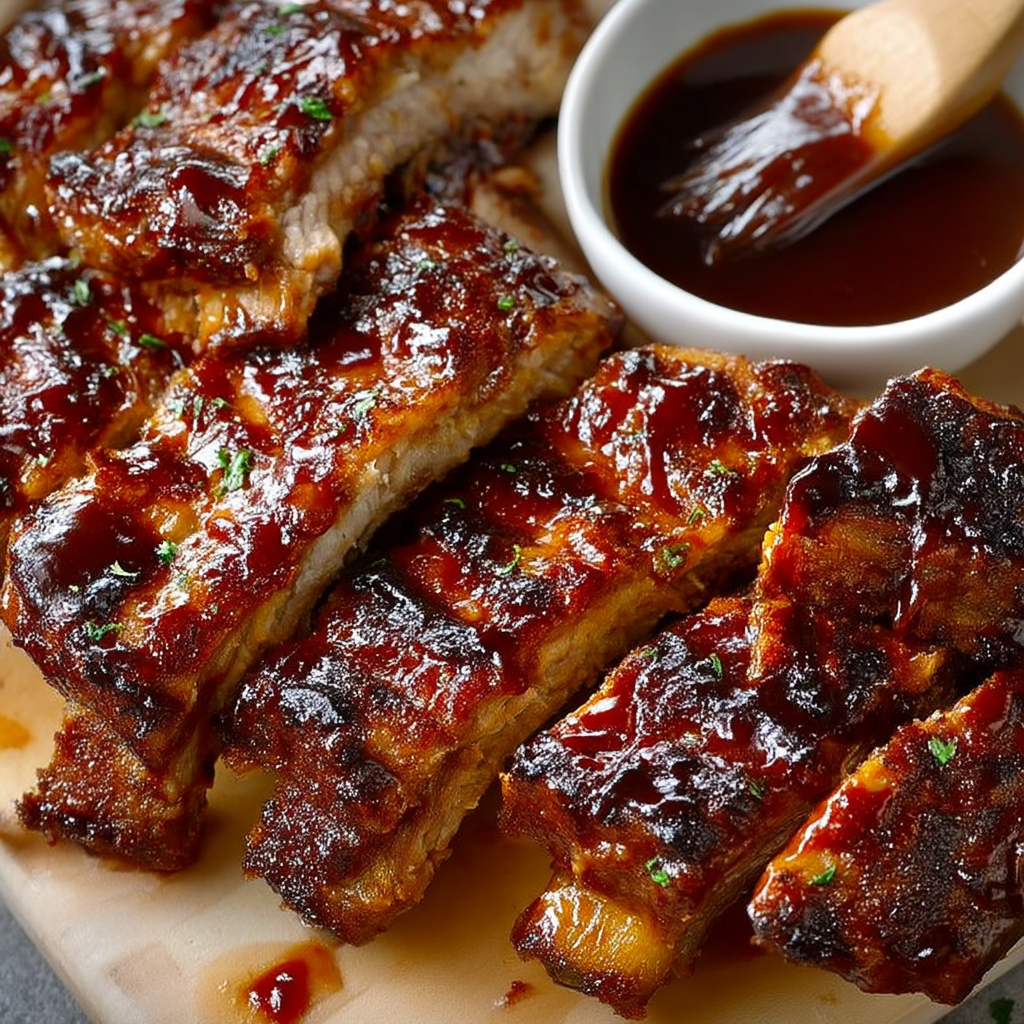Introduction to the Recipe
Dr Pepper Ribs are the ultimate fusion of sweet, smoky, and savory flavors, bringing a bold twist to traditional BBQ. This crowd-pleasing recipe transforms tender country-style pork ribs into a sticky, finger-licking masterpiece by simmering them in a marinade made with Dr Pepper soda, BBQ sauce, liquid smoke, and spices. The soda acts as both a tenderizer and a flavor booster, infusing the meat with subtle notes of cherry, caramel, and spice. The result? Juicy ribs with a deeply flavorful, lacquered glaze.
This method is surprisingly simple and doesn’t require a smoker or grill—these ribs can be made right in your oven or slow cooker. The Dr Pepper not only helps break down the meat’s connective tissue for fork-tender bites, but it also balances beautifully with your favorite BBQ sauce to create a glossy, rich finish. If you’re looking to explore more rib techniques, check out this guide to slow-cooked ribs or learn how to choose the right cut of pork for grilling.
Perfect for summer cookouts, weekend dinners, or anytime you want to impress with minimal effort, Dr Pepper Ribs offer a nostalgic yet gourmet take on BBQ. Whether you’re a fan of soda-based marinades or just looking to switch things up, this recipe delivers bold results with just a few ingredients.
Basic Recipe: Ingredients and Instructions
Print
Tender Dr Pepper Ribs
Description
These Dr Pepper Ribs are fall-apart tender with a sweet, smoky glaze. An easy, bold BBQ recipe made with just a few ingredients!
Ingredients
-
2–3 lbs country-style pork ribs
-
1 can (12 oz) Dr Pepper soda
-
1 cup BBQ sauce (your favorite variety)
-
½ teaspoon liquid smoke
-
1 teaspoon garlic powder
-
1 teaspoon ground black pepper
Instructions
-
Preheat oven to 300°F (150°C). Place ribs in a large baking dish or foil-lined roasting pan.
-
Pour Dr Pepper over the ribs and sprinkle with garlic powder and black pepper. Add the liquid smoke evenly over the top.
-
Cover tightly with foil and bake for 2 to 2.5 hours, or until the ribs are fork-tender and cooked through.
-
Remove from oven and drain excess liquid. Brush the ribs generously with BBQ sauce.
-
Increase oven temperature to 425°F (220°C). Return the ribs to the oven, uncovered, and bake for 15–20 minutes until the sauce is thick and caramelized.
-
Let rest for 5 minutes before serving. Serve with extra BBQ sauce on the side if desired.
Notes
Country-style ribs are meaty and cook beautifully in the oven—no grill needed.
Use a BBQ sauce with smoky or spicy notes to balance the sweetness of the Dr Pepper.
Adjust garlic and pepper amounts to your taste preferences.
Advanced Techniques
Choosing the best BBQ sauce to match Dr Pepper
Pairing the right BBQ sauce is crucial. Opt for a smoky, slightly spicy sauce if you want to counterbalance the sweetness of the soda. A chipotle or mesquite-flavored sauce works wonderfully. Avoid overly sweet sauces, which may result in an overly sugary glaze when combined with Dr Pepper.
Marinating overnight for maximum flavor
To really infuse flavor, marinate the ribs overnight in a mixture of Dr Pepper, garlic powder, and liquid smoke. This not only tenderizes the meat more effectively but also allows the flavors to deeply penetrate, resulting in more complex and satisfying ribs.
Using the broiler for a final char
For restaurant-style caramelization, place the ribs under the broiler for 2–3 minutes after the final bake. Watch carefully to avoid burning. This step adds a slight crisp to the exterior and intensifies the BBQ glaze.
Slow cooker adaptation for hands-off cooking
Place ribs, Dr Pepper, garlic, and liquid smoke in a slow cooker. Cook on low for 6–7 hours. Transfer to a baking sheet, brush with BBQ sauce, and broil or bake at 425°F for 10–15 minutes to caramelize.
Layering sauce in stages for richer flavor
Instead of applying all the BBQ sauce at once, brush in layers during the final bake. Add a layer, bake for 5–7 minutes, repeat. This technique creates a sticky, lacquered coating with deeper flavor development.
See more advanced recipes at cookingwhite.com
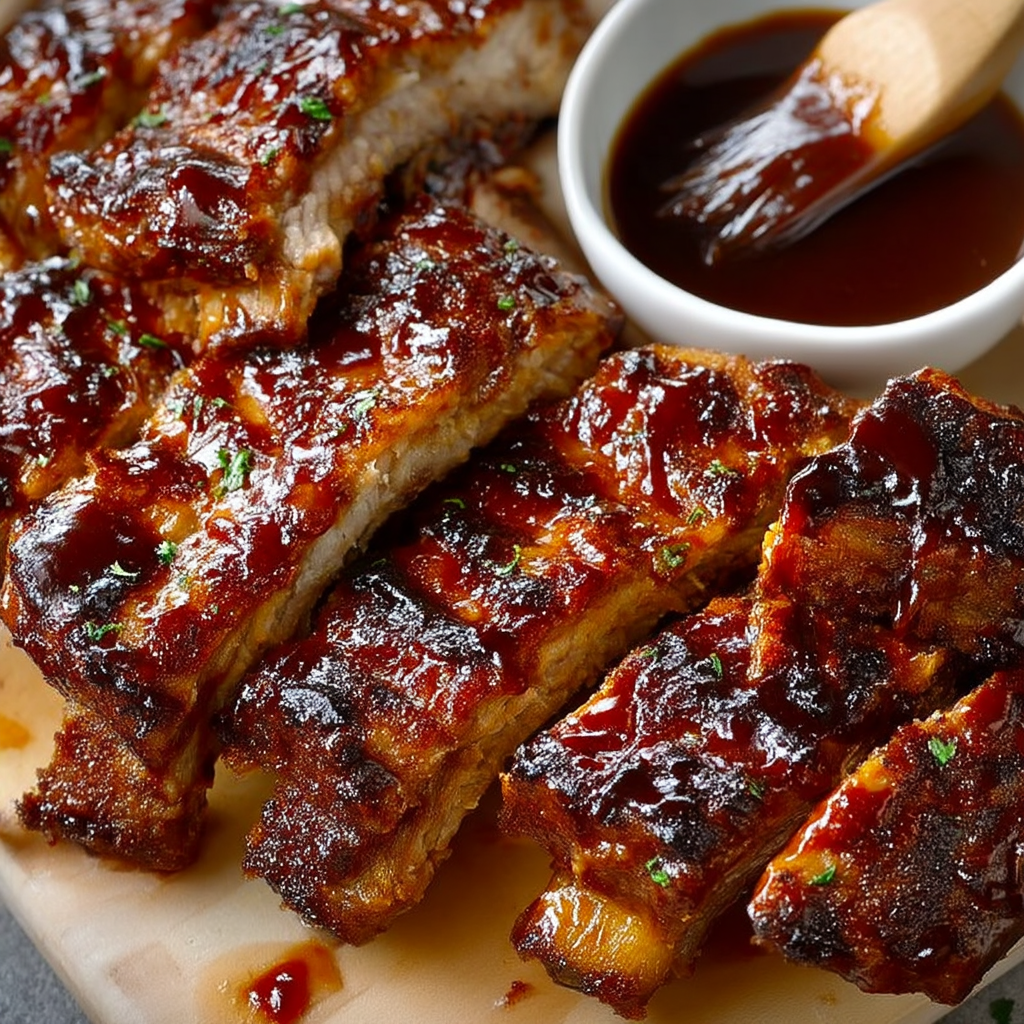
Storage, Shelf Life, and Maintenance Tips
Storing leftover ribs in the fridge
Wrap cooked ribs tightly in foil or place in an airtight container. Store in the refrigerator for up to 4 days. Make sure they’re fully cooled before refrigerating to preserve texture and prevent condensation.
Freezing for future meals
Freeze fully cooked ribs in individual portions with sauce for up to 2 months. Wrap in foil and place in a freezer-safe bag or container. Thaw overnight in the fridge before reheating.
Reheating without drying out
Place ribs in a baking dish, cover with foil, and reheat at 325°F for 15–20 minutes. Add a splash of water or Dr Pepper to keep them moist. Avoid microwaving if possible, as it can dry out the meat.
Refreshing the glaze after storage
After reheating, brush on a bit of fresh BBQ sauce and place under the broiler for 2 minutes to refresh the caramelized finish and boost the saucy flavor.
Using leftovers creatively
Shred leftover rib meat for sandwiches, tacos, or even pizza toppings. The sweet and smoky flavors pair perfectly with coleslaw, pickles, or melted cheese.
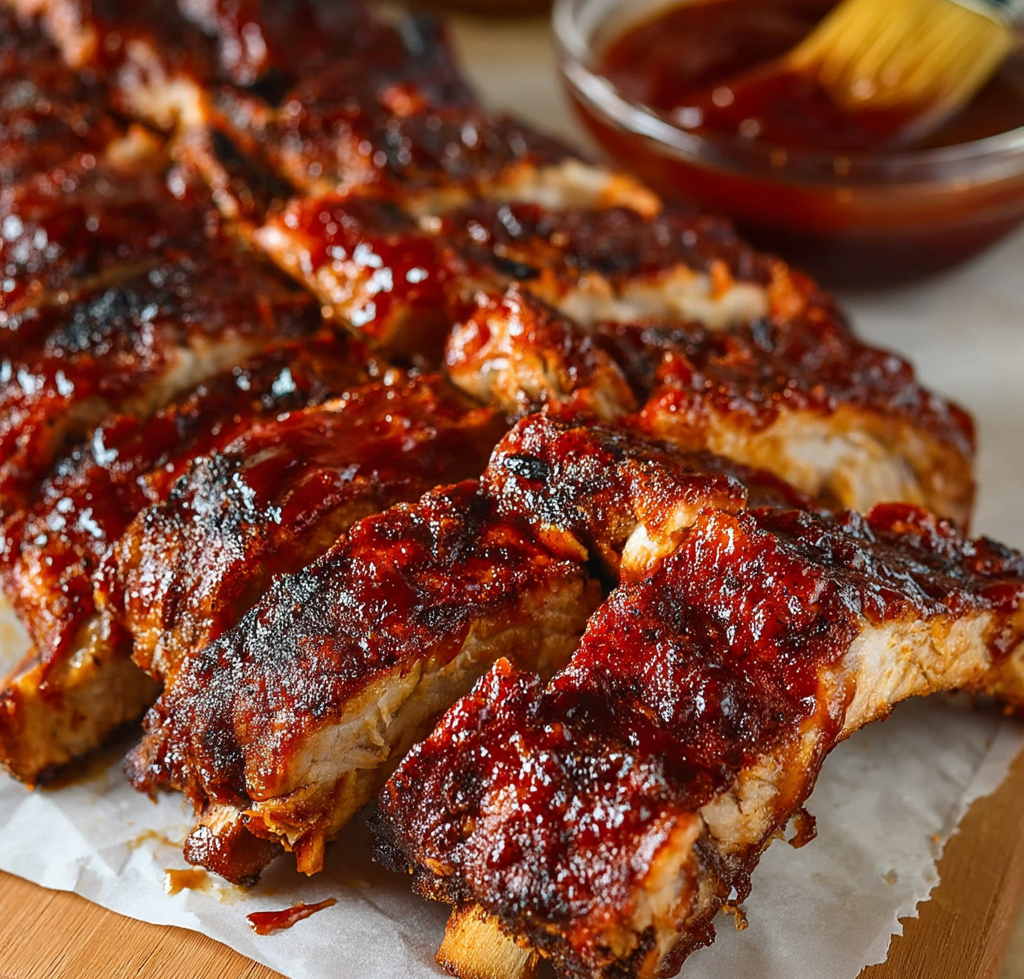
Dietary Adaptations and Substitutions
Using sugar-free soda for a lower-sugar version
If you’re reducing sugar, use a sugar-free Dr Pepper alternative. Look for versions without artificial sweeteners if you prefer natural flavors. Pair with a low-sugar BBQ sauce for balance.
Gluten-free adaptation
Ensure that your BBQ sauce, liquid smoke, and even the Dr Pepper are certified gluten-free. Many store-bought sauces contain hidden gluten in thickeners or flavorings.
Low-sodium version
Choose a low-sodium BBQ sauce and reduce or omit the added salt and liquid smoke. The soda already contributes flavor, so this adaptation helps control sodium without losing too much taste.
Beef or chicken alternatives
Try this method with beef short ribs or bone-in chicken thighs. Adjust cooking time accordingly—chicken cooks faster, so reduce the baking time to around 1 hour before saucing.
Homemade BBQ sauce as a clean alternative
Make your own BBQ sauce using tomato paste, apple cider vinegar, maple syrup, and spices to control ingredients and avoid preservatives or excess sugar.
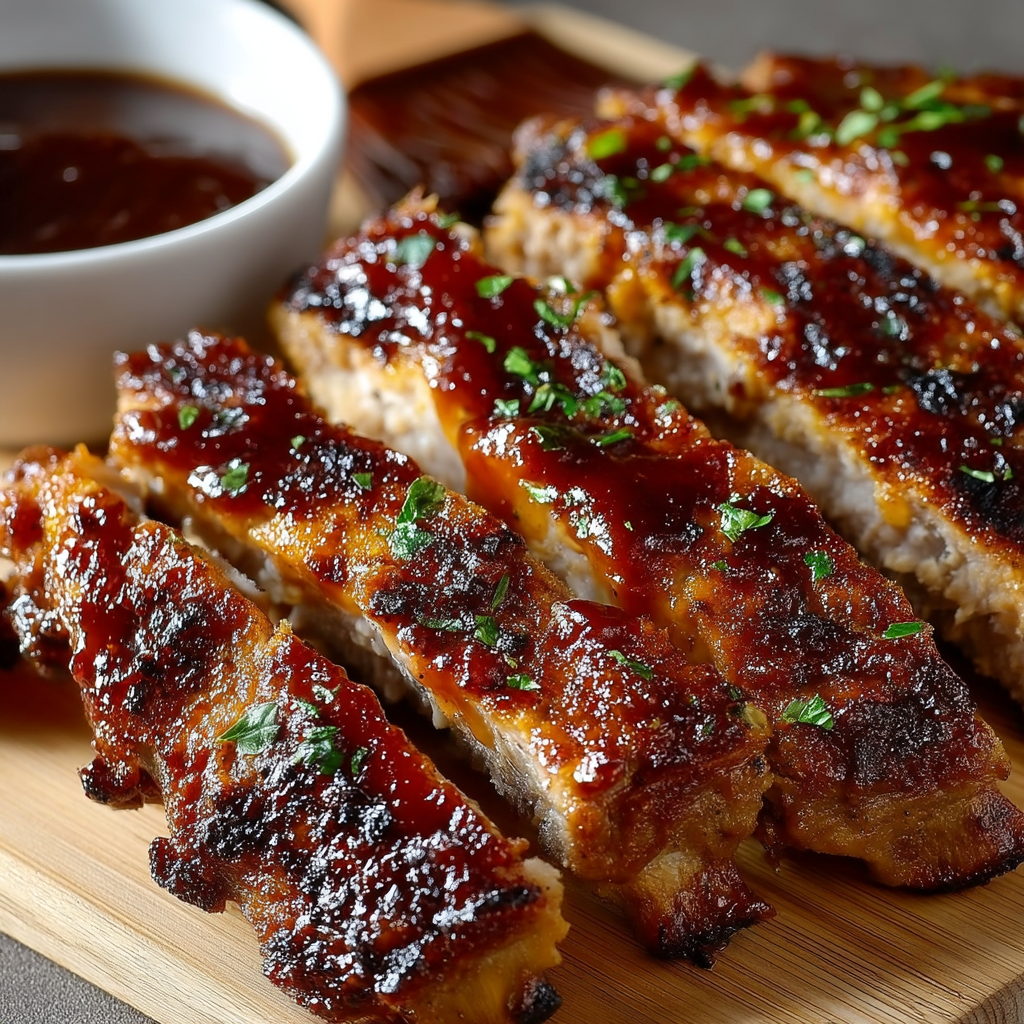
FAQs About the Recipe
Can I use baby back ribs or spare ribs instead?
Yes, but adjust the cooking time. Baby back ribs will take slightly less time, while spare ribs may need a bit longer. Always ensure internal temperature reaches 190–203°F for optimal tenderness.
What’s the purpose of the Dr Pepper in the recipe?
Dr Pepper helps tenderize the meat thanks to its acidity and sugar content. It also adds subtle flavor notes of cherry, vanilla, and spice that enhance the BBQ profile.
Is liquid smoke necessary?
While not mandatory, liquid smoke gives the ribs that authentic smoky BBQ flavor without needing a smoker. Use sparingly, as a little goes a long way.
Can I grill the ribs instead of baking?
You can grill them for the final 10–15 minutes after simmering or slow-cooking in Dr Pepper. Baste with BBQ sauce while grilling for a charred, smoky finish.
Can I make these ribs in advance for a party?
Absolutely. Cook the ribs the day before and refrigerate. Reheat with a fresh layer of sauce in the oven or under the broiler just before serving.
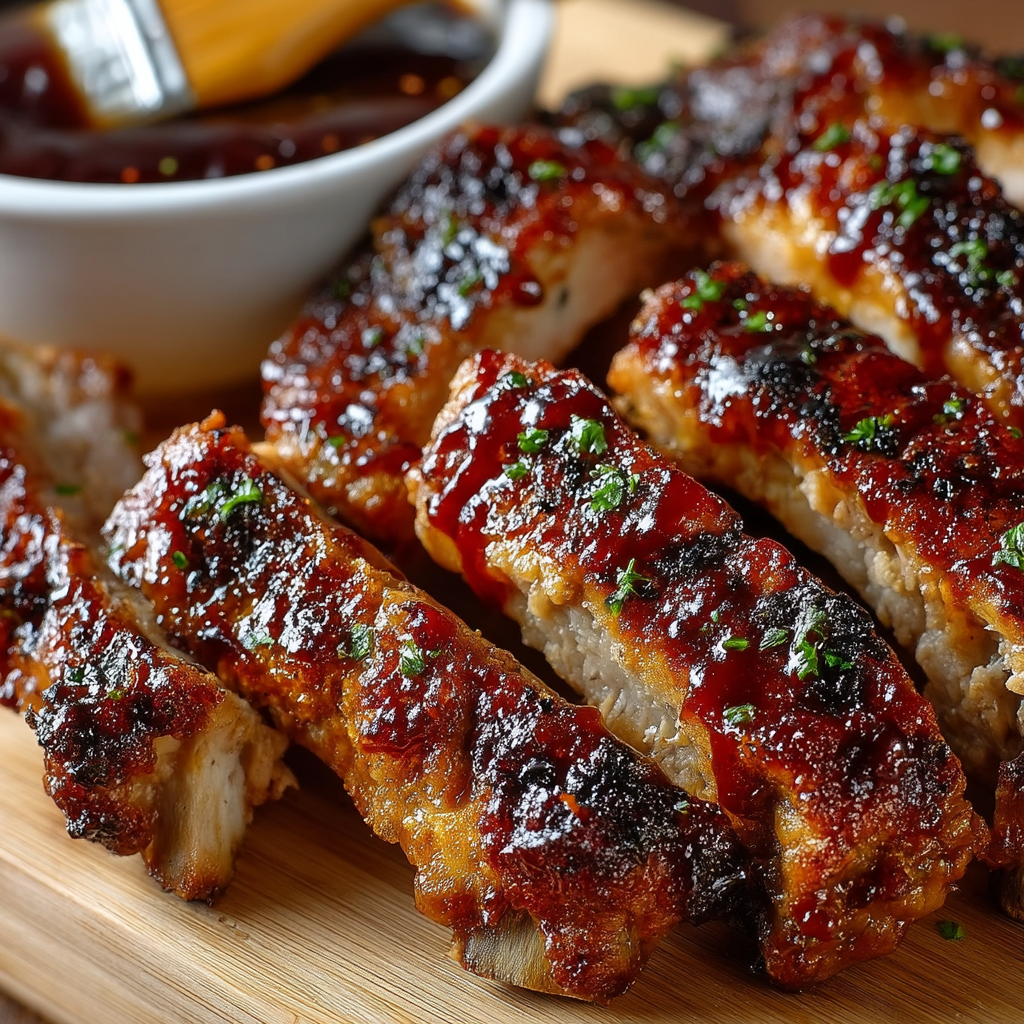
Conclusion & Final Thoughts
Dr Pepper Ribs are proof that sometimes the simplest ingredients make the boldest dishes. This recipe turns an everyday soda into a surprisingly flavorful BBQ marinade, resulting in tender, juicy ribs that practically melt in your mouth. Whether you’re hosting a backyard BBQ or just craving comfort food with a twist, these ribs deliver big-time flavor with minimal effort.
The balance of sweet, smoky, and savory makes every bite unforgettable. And the best part? No need for a smoker or fancy equipment—just a good baking dish, some foil, and your oven. With the flexibility to adapt for slow cookers or different meats, this is a recipe you’ll keep coming back to.
Perfect for potlucks, casual dinners, or weekend indulgences, Dr Pepper Ribs are the kind of dish that turns skeptics into fans and has people asking for seconds (and the recipe). Try it once, and it might just become your go-to way to make ribs that are tender, sticky, and full of flavor.

